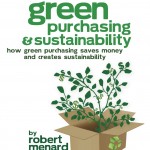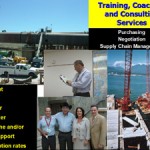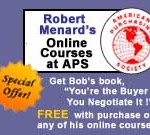 Editor’s note: Maureen Sullivan, President of NECI based in Victoria, BC, is a guest contributor to this blog. She may be reached at www.neci-legaledge.com. This post is used with permission of www.mtrovaancouver.org and first appeared in The Legal Edge Issue 99, July – September 2012.
Editor’s note: Maureen Sullivan, President of NECI based in Victoria, BC, is a guest contributor to this blog. She may be reached at www.neci-legaledge.com. This post is used with permission of www.mtrovaancouver.org and first appeared in The Legal Edge Issue 99, July – September 2012.
Metro Vancouver is responsible for delivering essential utility services such as drinking water, sewage treatment, recycling and garbage disposal for 22 municipalities, one electoral area, and one treaty First Nation in the Regional District. Not surprisingly, approximately 60 percent of Metro Vancouver’s annual spend is on construction contracts.
At a recent conference presentation, Tracey Husoy, Purchasing and Risk Manager, gave an interesting overview of what Metro Vancouver is doing to further the goals of sustainability and green procurement. Its Sustainable Procurement initiative, adopted in 2007, addresses who they buy from, and the Green Procurement initiative, adopted in 2009, dictates what they buy.
For every RFP issued 5 percent of the weighted criteria is allocated to environmental impact, and 5 percent to social impact. To ensure accurate evaluation, these two components are evaluated only by the Purchasing Department.
While it has never happened and therefore the language in untested, the subsequent Contract B document contains express language allowing Metro Vancouver to terminate the contract if it turns out they were misled on a material issue.
Sustainable Procurement
As a starting place, respondents to every competitive bid opportunity must declare any convictions within the past three years related to environmental, human rights, employment and workplace safety laws and regulations.
In response to the 5 percent social-impact criteria, many interesting sustainable initiatives have been proposed, including:
- Participate in the (Vancouver-area) Fast Track to Employment Program and Engineers Without Borders Canada.
- Establish, contribute and manage trust funds that provide financial support to schools and Third World countries.
- Subsidize transit passes and rideshare programs for employees.
- Allow time off with pay for employees to donate time to charity.
- Convert/move to a LEED building.
- Green teams and results, greenhouse gas inventories and results.
According to Husoy, the Sustainable Procurement initiative works with or without Green Procurement. It capitalizes on transparency of public procurement, works well in an organization with centralized procurement, and requires top-down support.
Green Procurement
More familiar to most of us, and perhaps easier to define and implement, Green Procurement focuses on the environmental attributes of products and services.
Metro Vancouver regularly forms small working groups of experts to develop green specifications for a variety of goods and services, and once developed, these specifications are applied to all purchases for those goods/services. For example, in addition to specifications for the low-hanging fruit such as paper and cleaning products, Metro Vancouver has leveraged its internal expertise to develop air quality specifications for diesel equipment, and deconstruction specifications for solid waste.
Lessons Learned
“Provide clear examples to bidders of what you are/are not looking for regarding extraordinary impacts,” Husoy advises. “Don’t deviate from or negotiate your stated process. Keep it simple, where possible, by relying on third-party certification, such as EcoLogo or FSC.” And, she adds, “Remember, it’s never ‘done’ – position your practices to be responsive to the marketplace. Above all, act now – don’t wait until you have something that is all-encompassing.”
If you need help getting started or would like more information, Metro Vancouver has prepared a complete package for other public-sector organizations, including RFP clauses and suggested contract language. It is all publicly available on their website at . The Sustainable & Green Procurement Information Package is available at this link:
Special thanks to Tracey Husoy for her assistance with this article. She can be reached at (604) 432-6327 or tracey.husoy@metrovancouver.org.






